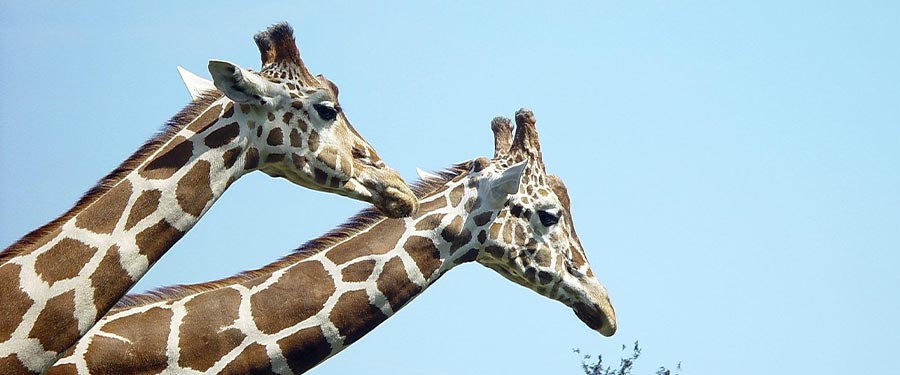The giraffe is a unique animal. It has evolved to have a long neck and long legs, making it the tallest terrestrial animal alive today. To cope with this unique anatomy, the giraffe has also developed unique cardiovascular, musculoskeletal and nervous systems.
In order to be able to pump blood vertically from its heart to its brain, nearly 2 metres, the giraffe has evolved a ‘turbocharged’ heart with an enlarged left ventricle. A giraffe’s blood pressure is 2.5 times higher than a humans and the blood vessel walls in its lower extremities are greatly thickened to withstand the increased hydrostatic pressure. The musculoskeletal system has evolved to support the weight of the giraffe’s long neck and head, with the nuchal ligament becoming greatly enlarged and strengthened. The long body has also led to adaptations in the nervous system allowing for rapid signal relay over long neural networks.
But the origin of the giraffe’s tall stature and its associated adaptations have always been unknown. The giraffe’s closest relative is a zebra-like animal called the okapi (Okapia johnstoni). The giraffe and the okapi diverged from their common ancestor approximately 11.5 million years ago, so in evolutionary terms the giraffe’s unique adaptations have emerged very quickly.
To understand the genetic mutations which have given rise to the giraffe’s unique physical appearance and cardiovascular system, a team of scientists, co-led by Douglas Cavener of Penn state University and Morris Agaba of the Nelson Mandela African Institute of Science and Technology in Tanzania, have carried out DNA testing to sequence and analyse the full genomes of the giraffe and okapi.
The okapi and giraffe have a very different appearance and physiology but their genomes are very similar and so any differences detected should help pin point the genes responsible for the giraffe’s unique evolutionary traits. What the scientists discovered was very surprising. They found that only very subtle changes in the DNA of the giraffe had led to its unique characteristics.
Cavener said, “There’s a misconception that to make something novel in evolution you must be doing something very dramatic at the DNA level, but that just isn’t the case. You can have these very subtle changes in DNA that create dramatic effects.”
They found 70 genes with multiple signs of adaptation (MSA) in the giraffe. Several of these genes are known to encode regulators of skeletal, neural and cardiovascular development.
The team plans to study these giraffe-specific mutations further. In particular, the giraffe-specific mutations in the genes associated with the cardiovascular system may prove valuable in the research into hypertension and cardiovascular disease in humans.
Source: Nature Communications 7, Article number 11519, 17 May 2016, doi:10.1038/ncomms11519

